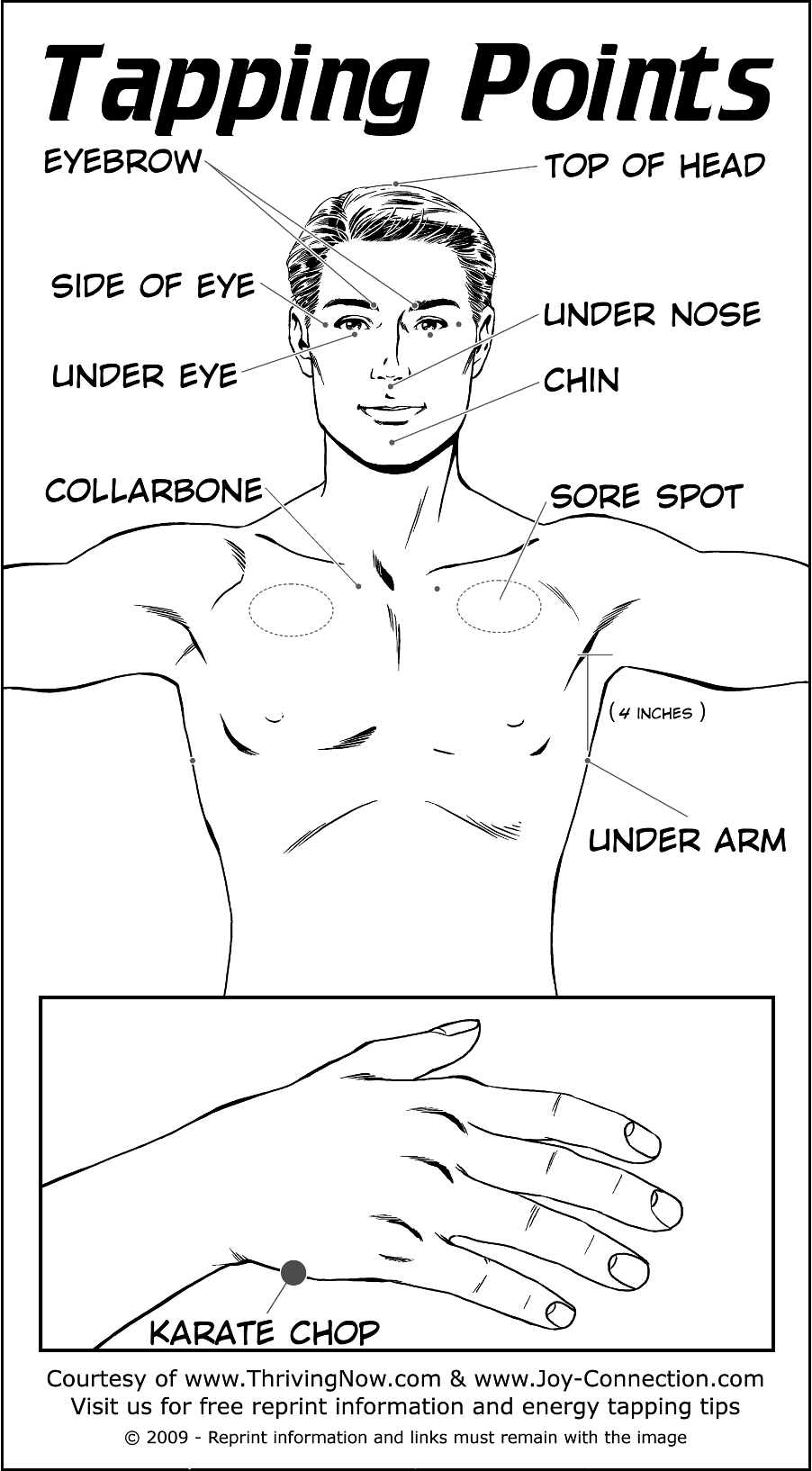Emotional Freedom Technique (EFT) 101
Royalty free photo from pixabay.com
Emotional Freedom Technique (EFT)—also known as “tapping”—was developed by Gary Craig in the 1990s as a simplified version of Thought Field Therapy (TFT), which is a technique developed by Craig’s teacher, Roger Callahan. EFT, which has been nicknamed “acupuncture without needles,” is a form of energy psychology that combines cognitive therapy, exposure therapy, and somatic stimulation.
Although EFT can be administered by a practitioner (such as a therapist), the EFT protocol is simple to learn and can be self-administered by making a series of verbal affirmations while gently and repeatedly tapping on a series of nine acupoints (which are located on the outside of the hand, top of the head, inner eyebrow, outside of the eye, under the eye, under the nose, under the lips, under the collarbones, and under the arms).
When practicing EFT, a person is first asked to think of a distressing event or memory that they would like to process. They then rate their level of emotional distress on a Likert-type scale from 0 (minimum) to 10 (maximum). Next, as they use their fingertips to repeatedly tap the acupoint on the outside of the hand (known as the karate chop point), they repeat the following “setup statement” three times: “Even though I [insert problem statement], I deeply and completely accept myself.” Then the person taps the remaining eight acupoints 5-10 times each while repeating a short phrase or affirmation (known as the “reminder phrase”). The person will then re-rate their level of emotional distress on a scale of 0-10. This process is considered one “round” of EFT. People can practice as many rounds as they need to until their level of distress has decreased.
Although there are many variations of this technique, the official resource for information related to EFT and its protocol is “The EFT Manual,” which has been available as a free digital download since the mid-1990s. EFT is an evidence-based practice that has been shown to be effective in hundreds of peer-reviewed clinical trials, which can be seen at www.research.eftuniverse.com.
References
Church, D., & Brooks, A. J. (2010). Application of emotional freedom techniques. Integrative Medicine, 9(4), 47-48.
Clond, M. (2016). Emotional freedom techniques for anxiety: A systematic review with meta-analysis. The Journal of Nervous and Mental Disease, 204(5), 388-395.
Flint, G. A., Lammers, W., & Mitnick, D. G. (2006). Emotional freedom techniques: A safe treatment intervention for many trauma based issues. Journal of Aggression, Maltreatment & Trauma, 12(1-2), 125-150.
Nelms, J. A., & Castel, L. (2016). A systematic review and meta-analysis of randomized and nonrandomized trials of clinical emotional freedom techniques (EFT) for the treatment of depression. Explore, 12(6), 416-426.
Varvogli, L., & Darviri, C. (2011). Stress management techniques: Evidence-based procedures that reduce stress and promote health. Health Science Journal, 5(2), 74-89.

